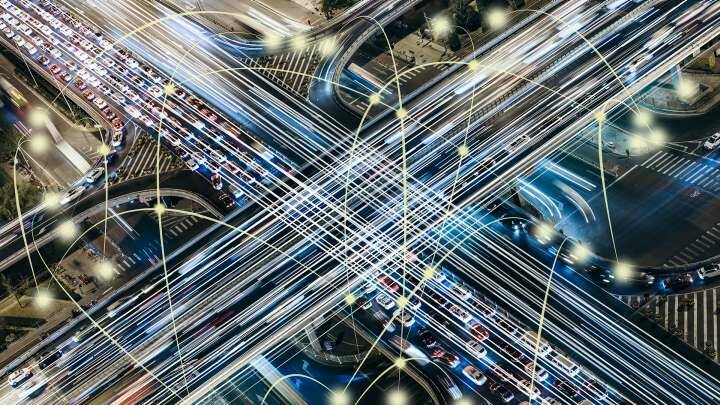Discover how Intel's cutting-edge technologies and expertise are driving transformative advancements in sectors such as healthcare, finance, retail, manufacturing, and transportation. Whether you're seeking to enhance patient care, optimize financial operations, personalize customer experiences, streamline production processes, or revolutionize transportation systems, our comprehensive AI solutions cater to the unique needs of each vertical.



Myth
About AI in Healthcare
Real-World Use Cases
Customer Success Stories
The list of solutions below comprises of offerings from Intel's Partner Ecosystem designed for Healthcare use cases and scenarios. See the table for the different types of solutions for Healthcare

AI improves productivity by automating tasks and can help clinicians with fast, accurate diagnoses and treatment.2 Artificial intelligence in radiology can reduce the compute time needed to generate images. In population health, machine learning can help identify the likelihood of hospital readmission. AI in pharmaceuticals development can lead to the discovery of new drugs. AI can also make it possible to ingest data from multiple sources, like medical records and vital signs, and identify patterns that are difficult for humans to spot.


AI can make it possible for automated systems to evaluate medical images for anomalies, monitor patient vital signs at scale, and alert clinicians to intervene when needed. It helps improve operational and clinical workflows and integrate data from many different sources so that clinicians can make more-informed decisions. Researchers are tapping AI to assist in drug discovery, targeted therapeutics, and infectious disease management. Other examples of AI in healthcare and life sciences include lab automation, robotics, and AI-enabled telemedicine.
The promise of AI in healthcare and life sciences is profound. It has the potential to help clinicians and researchers prevent disease, speed recovery, and save lives by unlocking complex data. It can also free them from mundane tasks, so they can focus on their patients or research.

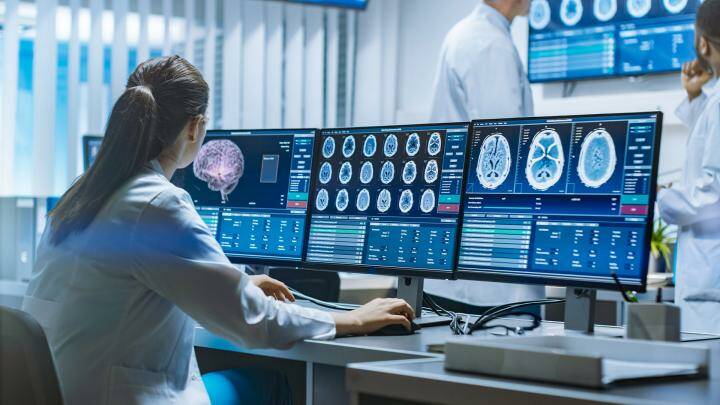
About AI in Transportation
Real-World Use Cases
Customer Success Stories
The list of solutions below comprises of offerings from Intel's Partner Ecosystem designed for Transportation use cases and scenarios. See the table for the different types of solutions for Transportation.

AI offers a range of benefits in transportation and autonomous vehicles. It enhances safety by enabling advanced driver assistance systems and autonomous vehicles to detect hazards and respond swiftly.
AI optimizes traffic flow, reduces congestion, and improves fuel efficiency, resulting in improved traffic efficiency and sustainability. Personalized services based on user preferences enhance the commuting experience, while autonomous vehicles increase accessibility for individuals with mobility limitations. AI also streamlines fleet management, reduces emissions, and promotes eco-friendly practices.
Overall, AI empowers transportation with safer, more efficient, and sustainable solutions.
AI is revolutionizing the transportation industry, particularly in the realm of autonomous vehicles. AI technologies such as computer vision, machine learning, and sensor fusion are being employed to enable self-driving cars and other autonomous vehicles. AI algorithms process real-time data from cameras, lidar, radar, and other sensors to perceive and interpret the surrounding environment. This allows autonomous vehicles to detect and identify objects, make complex decisions, and navigate safely on the roads.
AI also plays a crucial role in optimizing routes, predicting traffic patterns, and enhancing energy efficiency in transportation systems. By leveraging AI, the transportation industry is moving towards a future where autonomous vehicles offer safer and more efficient mobility solutions.
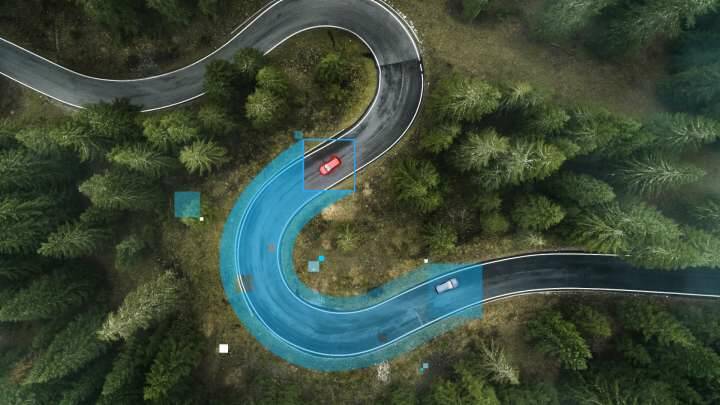

Intel offers a comprehensive portfolio of technologies, Intel-powered partner solutions, and resources to enable AI everywhere and help businesses uncover actionable, data-driven insights; develop and deploy new innovative ideas; and bring smart transportation projects to life.


About AI in Retail
Real-World Use Cases
Customer Success Stories
The list of solutions below comprises of offerings from Intel's Partner Ecosystem designed for Retail use cases and scenarios. See the table for the different types of solutions for Retail.

AI brings numerous benefits to the transportation and supply chain industry, revolutionizing operations and delivering significant advantages. Enhanced efficiency through optimized transportation routes reduces costs and improves delivery schedules. Real-time decision-making capabilities enable quick responses to disruptions, minimizing delays and optimizing operations. AI-driven predictive analytics facilitates accurate demand forecasting, enabling inventory optimization and reducing wastage.
Additionally, AI enhances safety by supporting autonomous vehicles and predictive maintenance, ensuring proactive measures to prevent equipment failures. These benefits of AI in transportation and supply chain lead to improved operational efficiency, cost savings, and enhanced customer satisfaction.
Artificial intelligence (AI) is reinventing the retail landscape. From using computer vision to customize promotions in real time to applying machine learning for inventory management, retailers can harness AI to connect with their customers and operate more efficiently. Intel® technologies power AI in retail at every step of the way, from the brick-and-mortar edge to the cloud.


AI is enabling retail systems to work together to optimize customer experiences, forecasting, inventory management, and more.


About AI in Manufacturing
Real-World Use Cases
Customer Success Stories
The list of solutions below comprises of offerings from Intel's Partner Ecosystem designed for Manufacturing use cases and scenarios. See the table for the different types of solutions for Manufacturing.
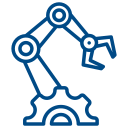
AI-powered technologies such as machine learning, computer vision, and robotics optimize various aspects of the manufacturing process. AI enables predictive maintenance, identifying potential equipment failures before they occur, reducing downtime, and optimizing maintenance schedules.
Through data analysis, AI enhances production planning, inventory management, and supply chain optimization, improving resource allocation and reducing costs. AI-powered robotics automate repetitive tasks, increasing productivity and reducing human error. Overall, AI in the industrial sector improves operational efficiency, enhances quality control, reduces costs, and drives innovation, enabling manufacturers to stay competitive in the global market.
IoT devices and connected factories generate immense amounts of data. AI and HPC make it possible to quickly and effectively process and analyze all of it, resulting in improved efficiency and productivity.
For example, connected factory data can be used to generate near-real-time production insights that help enhance your organization’s decision-making. In structural and product design, AI approaches can help engineers define the problem and estimate the resources required to solve it. Physics-based AI enables engineers to project a solution design from a knowledge base of solutions.


AI at the edge is powering a revolution in industrial IoT, from real-time processing and analytics that drive greater efficiency and learning to predictive maintenance.


About AI in Finance
Real-World Use Cases
Customer Success Stories
The list of solutions below comprises of offerings from Intel's Partner Ecosystem designed for Finance use cases and scenarios. See the table for the different types of solutions for Finance.

AI in transforming operations and enabling more efficient and personalized financial services. By leveraging machine learning algorithms,
AI improves fraud detection and prevention, enhancing security measures. AI-powered chatbots and virtual assistants provide instant customer support, answering inquiries and resolving issues promptly. Additionally, AI automates manual processes, such as data analysis and risk assessment, leading to faster and more accurate decision-making. Predictive analytics enables accurate forecasting, risk management, and personalized financial recommendations.
Overall, AI empowers the finance sector with improved security, enhanced customer experiences, streamlined operations, and data-driven insights, ultimately driving efficiency and innovation in the industry.
In the banking industry, artificial intelligence helps companies to automate business-critical processes such as risk management and fraud prevention while unlocking new capabilities, such as the use of chatbots and intelligent recommender systems for retail banks.
Artificial intelligence is also being used by financial institutions operating in capital markets—asset managers and hedge funds, among others—to improve efficiency and deploy new capabilities. The technology is often used to support risk management processes in addition to optimizing trading strategies for a variety of financial instruments.


Artificial intelligence technology is helping to automate traditional processes and deliver enhanced capabilities for financial institutions in banking, capital markets, insurance, and payment processing.


About AI in Government
Real-World Use Cases
Customer Success Stories

The list of solutions below comprises of offerings from Intel's Partner Ecosystem designed for Government use cases and scenarios. See the table for the different types of solutions for Government.

AI brings numerous benefits to the transportation and supply chain industry, revolutionizing operations and delivering significant advantages. Enhanced efficiency through optimized transportation routes reduces costs and improves delivery schedules. Real-time decision-making capabilities enable quick responses to disruptions, minimizing delays and optimizing operations. AI-driven predictive analytics facilitates accurate demand forecasting, enabling inventory optimization and reducing wastage.
Additionally, AI enhances safety by supporting autonomous vehicles and predictive maintenance, ensuring proactive measures to prevent equipment failures. These benefits of AI in transportation and supply chain lead to improved operational efficiency, cost savings, and enhanced customer satisfaction.
From the front lines to the command center, and from city streets to research labs, public sector agencies work on complex problems that help improve safety, quality of life, and productivity. Artificial intelligence (AI) has become an integral tool to help meet these needs by automating tedious tasks, freeing up workers’ time to focus on more-important objectives, and accelerating data analysis.
Intel® technology can help government agencies quickly and easily deploy sophisticated AI models on high-performance hardware to unlock the extreme value and potential of AI, even within tight budgets.


AI in government enables mission teams—through accelerated data analysis, increased efficiencies across mission systems, and near-real-time insights—to make faster, more-informed decisions wherever they are, from the field to the command center, office, or laboratory.


About AI and Smart Cities
Real-World Use Cases
Customer Success Stories
The list of solutions below comprises of vendors available at TD SYNNEX designed for smart city use-cases and scenarios. See the table for the different types of solutions for smart cities.

Embedded smart city technologies (AI, sensors, cameras, and edge computing) can now provide near real-time awareness of issues requiring attention, and data collected and analyzed from these devices can be used to optimize city operations. Smart city solutions can improve basic services, enhance public safety, increase sustainability, and inform planning and policy making. They can also be used to enhance public experiences and optimize operational efficiency at local sports stadiums, theme parks, and resorts or improve parking and safety on university campuses. The reach and impact are broad, but every application helps result in a better quality of life for citizens.
Modern cities continue to grow at a rapid pace, with 55 percent of the world’s population living in urban areas today and a projected 13 percent increase to that number by 2050.1 Cities around the world are being challenged to provide tangible and equitable economic, social, and environmental benefits for their citizens. They must also provide better quality and more sustainable services, improve public safety, address congestion and environmental issues, reduce costs, and promote local economic competitiveness. Scaling existing infrastructure and human resource-intensive processes is cost prohibitive, unmanageable, and unsupportable, so cities are looking to technological solutions to alleviate these pressures.
As population has grown, technology has taken unprecedented strides. With the introduction of Internet of Things (IoT) devices, edge computing, machine learning, artificial intelligence (AI), and 5G communications networks, the technological tools needed are now available, and transitioning to a smart, technology-supported city is now possible.
Smart cities use embedded technologies, open data platforms, and artificial intelligence to improve services, reduce congestion, and build more sustainable futures.
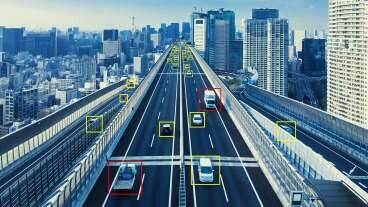



About AI for Safety and Security
Real-World Use Cases
Customer Success Stories
The list of solutions below comprises of vendors available at TD SYNNEX designed for safety and security use-cases and scenarios. See the table fort he different types of solutions for safety and security.

With the integration of AI algorithms into surveillance systems, industrial monitoring, and cybersecurity measures, Intel AI elevates situational awareness and threat detection to unprecedented levels of precision and speed.
Whether it's identifying anomalies in real-time, enhancing the efficiency of security personnel, or safeguarding critical infrastructure, Intel AI ensures that safety is proactive, responsive, and comprehensive. With Intel AI, organizations gain a strategic advantage, enabling them to not just meet the challenges of today but anticipate and mitigate the threats of tomorrow, creating a world where safety and security are not just ideals but tangible realities. Welcome to a safer and more secure future powered by Intel AI.
In the world of cutting-edge technology, Intel AI for Safety and Security emerges as a pioneering force. Recognized for its unwavering commitment to a safer and more secure future, Intel empowers organizations across diverse industries with advanced AI solutions. Their portfolio of AI-driven technologies, rooted in Intel's heritage of excellence, redefines conventional paradigms of safety and security. This journey invites all to witness the convergence of intelligence and protection, where data transforms into foresight, and where Intel AI ensures a fortified future safeguarded by trusted intelligence.
AI at the edge enables more data for predictive analytics and model-driven decision support, pairing in-camera video analytics and deep learning capabilities for improved safety and security in the public and private sectors.




About AI in Hospitality
Real-World Use Cases
Customer Success Stories

The list of solutions below comprises of vendors available at TD SYNNEX designed for hospitality use-case scenarios. See the table for the different types of solutions for hospitality.

As customer expectations evolve, from increased attention on health and data security to streamlined transactions and more immersive experiences, hotels are struggling with how to scale new smart solutions across potentially many locations.
Additionally, third-party websites and apps, such as food delivery platforms and review sites, are putting pressure on restaurants to streamline the customer experience. Infrastructure and interoperability hurdles demand more-seamless connections between the front and back of house to boost productivity, conserve costs, and improve service.
Intel and its partner ecosystem offer prevalidated solutions to help guests and staff interact and transact seamlessly across the property through different technology touchpoints. Hotels and restaurants powered by the latest Intel® AI solutions bring a range of exciting opportunities for enhanced immersive guest experiences and improved operational efficiencies.
Hotels and restaurants face a host of challenges in today’s ever-changing marketplace, from aging legacy systems to rising costs. Quickly evolving consumer expectations—increasingly driven by new digital capabilities—are pushing brands to offer greater speed, convenience, and personalization.
More than ever, technology is vital to meeting such customer expectations. A proven innovator with a vibrant ecosystem of leading technology partners, Intel helps you put the right kind of analytics and artificial intelligence (AI) exactly where it is needed. That means an enhanced view of operations, greater customer loyalty and safety, more efficiency through automation, and an overall better experience for your customers.
In today’s hypercompetitive hospitality and restaurant industries, success starts with providing the best customer experience. Offering a robust portfolio of partner solutions ranging from self-service kiosks to interactive digital signage, Intel AI empowers you to deliver for your customers like never before.














